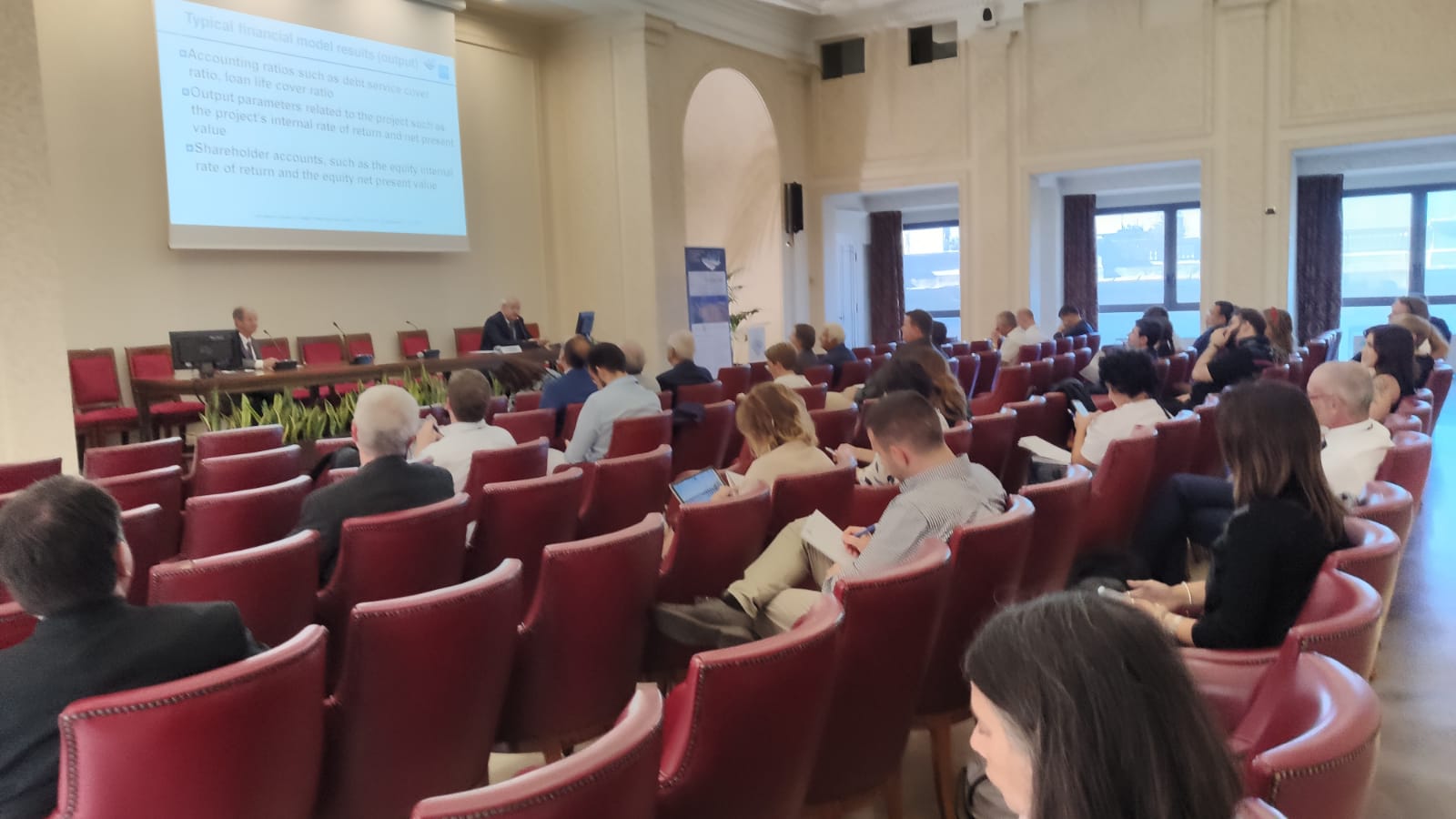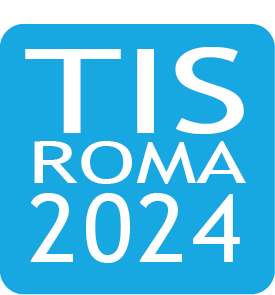TIS 2019
Session 10 – Transport Policy

Transportation policy and planning were the main issues discussed during the first session of the TiS Congress chaired by Cesar Quieroz (World Bank). The papers discussed during this session presented various experiences of Public Private Partnerships in different countries, including significant examples of infrastructure and transportation systems planning both in urban and in extra-urban contexts.
Elisabetta Venezia and Fabio Pizzutilo – Evaluation tools for transport infrastructures: Social Return On Investments / The Social Return On Investment (SROI) was analysed as a form of evaluation that contributes to a wider analysis of investments by using some tools applied to the transport sector. The considerable presence of intangible effects bring about some problems of quantification, solved by SROI through the use of monetary units. If benefits are considered, it is evident that the share of benefits which do not have a market reference, in some projects, is of great importance. Thus project validity vitally depends on the evaluation of the effects such as noise, pollution and saving of time, and on the quality of SROI evaluation. One key point of the evaluation process, on which they focused, is the environmental impact of transport activity which is linked to the value of the land and the social implication of the willingness-to-pay principle through the use of empirical methods.
Giancarlo Bertalero, Andrea Rosa and Bruno Dalla Chiara – Analysis of outsourcing conditions for freight transport and logistics among manufacturing companies: insights from a review of data and an on-field investigation / It is often assumed that many Italian manufacturers carry out their transports on own account or that they use ex-works type commercial terms, thus leaving the choices concerning transport of their products to third parties. Moreover, it is often argued that logistics outsourcing is limited.
The presented research investigated whether manufactures are aware of recent developments in energy and environmental policies and how those affect their transport choices. The interviews confirmed that own account road transport plays a minor role in freight transport in Italy and that it is used mostly on short distances: interestingly, most companies assessed the option of outsourcing some logistics tasks. Reasons for insourcing varied from quality control to negative judgements. So, more generally, the research found that commercial terms are imposed by negotiating power.
The analysis can contribute to understand possible evolutions of freight transport in terms of efficiency, competitiveness, modal choice and energy issues, both with reference to multimodal and road transport.
Alexander Rossolov, Oleksii Lobashov, Denis Kopytkov and Vitalii Naumov – Sustainable suburban supply chain / The presenter, started from the assumption that recently, the cities are characterized by the strengthening of transport and socio-economic links with suburban areas to which city inhabitants are moving in order to guarantee the comfortable and calm habitation.
In such conditions, the concept of sustainable cities should be extended to the concept of sustainable urban-suburban areas, for which the formation of eco-friendly transport, retail, and entertainment infrastructure becomes relevant. So, they proposed an approach to construct the sustainable supply chain within a suburban area in case of a suburb of one of Ukrainian megalopolises.
The task of the negative impact reduction of transport on the environment while the transportation of perishable foodstuffs was considered and optimization methods and the extreme experimental design theory was proposed for the formation of the rational transport cycles and definition of the needed number of food storage points.
Cesar Queiroz and Goran Mladenovic – A Review of Tools for Project Financial Assessments / that are Under certain circumstances, that is to say when Governments don’t have the funds to build transport and other infrastructure projects, they can be implemented by involving private financing, through public-private partnerships (PPP), which is a means to get projects completed by leveraging scarce public resources.
The speakers proposed a reviewof existing tools for assessing the financial viability of several categories of transport infrastructure projects: (i) toll roads; (ii) hybrid road PPP projects, which involve both tolls and availability payments; (iii) availability payment PPP projects in any sector; and (iv) output- and performance-based projects. For all the tools reviewed, as is also the case for other similar models, the main input data include the project estimated capital (or investment) cost, capital structure (i.e., proportion of equity, loans and subsidies), annual operation and maintenance cost, loan key parameters (i.e., maturity, interest rate and grace period), tax rates. The main output data generated by the models include the project’s internal rate of return, equity internal rate of return, annual debt service coverage ratio and the present value of the government’s cash flow.
Giuseppe Inturri, Salvatore Fiore, Matteo Ignaccolo, Salvatore Caprì and Michela Le Pira – “You study, you travel free”: when mobility management strategies meet social objectives / Promoting a shift from private to public transport is one of the main challenges that policy-makers face to foster sustainable mobility. The presenter showed the case of Catania (Italy), a medium-sized city (300,000 inhabitants) located in southern Italy, where University students are experiencing fare-free public transport from 2018. They described this strategy as one of the main results of a strict collaboration between the Mobility Management office of the University of Catania, and the two local public transport providers.
The first results were shown: the big impact of this policy on students’ behaviour and the opportunity to constantly compare data estimated level of service with students’ experience.
Maria Attard – Mobility justice in urban transport – the case of Malta /
Maria Attard described the Malta transport system development and highlight issues related to equity and justice. In fact, Malta has been experiencing a rapid urban development, an increasing car ownership and a urban land use densification: the result today is evident in the high costs of congestion, air and noise pollution, health impacts and overall decline of the quality of the urban areas due primarily to the overbearing presence of the car in the public realm.
Inspired by the works of Vasconcellos (2000; 2014) and Gössling (2016) the researcher investigated the main mobility consumptions of space, time and energy and their impact on exclusion, pollution and road safety, and the overall implications on the right to mobility. Finally the study aims to raise awareness of the growing transport injustices in the system and provide sufficient justification for changes in current urban and transport planning, and infrastructure development.
Nebojsa Stefanovic, Sasa Milijic and Natasa Danilovic Hristic – System Approach in Process of Planning and Project Documentation Preparation for Highway Corridors as an Instrument for Establishing the Trans-European Transport Network / The presented paper represents the methodological approach and the interaction of two levels of planning – strategic and detailed, in correlation with the designing level, pointing to the significant parallel activities, such as strategic environmental assessments, environmental impact assessment and social acceptability of analysis and processing of spatial database in geographic information systems (GIS). A matrix of objectives, tasks and conditionality was analysed, as well as their procedure of verification, with overview of the state of planned development of motorway corridors in Serbia. Through the conclusions the authors offered guidelines for a methodology of making this specific plans and projects, in order to optimize the time, synchronize phases and support decision making process. Approach in planning process and project documentation preparation for highway roads in Serbia is analyzed on current example of corridor Route 7-E 80, in the section Niš-Priština, as part of a regional transport development in Southeast Europe.
CHAIRMAN: Cesar Queiroz



